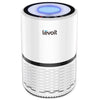“Just because something isn't a lie does not mean that it isn't deceptive.” ― Criss Jami
 Are you confused by food labels? It’s probably not your fault. Misleading labels trick our eyes into thinking we are purchasing something safe. Manufacturers know how to use colors and buzz words to manipulate our perception of their products. For example, you may pick up a bag of chips that says “gluten-free” and “kosher” or “all-natural.” You probably feel really good about your choice—until you realize they are made with non-organic, GMO ingredients. Next time, use these strategies to avoid being fooled by misleading food labels.
Are you confused by food labels? It’s probably not your fault. Misleading labels trick our eyes into thinking we are purchasing something safe. Manufacturers know how to use colors and buzz words to manipulate our perception of their products. For example, you may pick up a bag of chips that says “gluten-free” and “kosher” or “all-natural.” You probably feel really good about your choice—until you realize they are made with non-organic, GMO ingredients. Next time, use these strategies to avoid being fooled by misleading food labels.
While shopping, stay mindful to ensure sure you aren’t being tricked by color or design. Manufacturers know that consumers associate the color green and plantlike patterns with products that are fresh, healthy, natural, and organic. Marketing research shows that 60% to 90% of a consumer’s choice is based on color alone (HartDesign, 2016). But the color of a package has nothing to do with what is inside.
 We should also be weary of buzzwords. You might assume the government has strict control over the labels manufacturers use on their products. While the FDA does provide standards regarding some phrases, it is up to individual companies to abide by those guidelines. Companies are also expected to perform their own testing to determine if a product is safe.
We should also be weary of buzzwords. You might assume the government has strict control over the labels manufacturers use on their products. While the FDA does provide standards regarding some phrases, it is up to individual companies to abide by those guidelines. Companies are also expected to perform their own testing to determine if a product is safe.
With little oversight, it is important to know what a label actually means, versus what is being implied. A food that is labeled “no sugar, dyes, or preservatives” can contain high doses of sodium, pesticides and GMOs. Foods with “no sugar added” may be loaded with natural carbohydrates and sugars—something diabetics should really watch out for.
Another big deception is the use of the term “all-natural.” The FDA has no established definition for this term. A product could be loaded with high fructose corn syrup and still be labeled “all-natural” since corn syrup comes from natural corn. In this case, “all-natural” isn’t always synonymous with “healthy.”
 Perhaps the most misleading phrase is “made with organic.” This means at least 70% of the ingredients are organic; the other 30% can be anything. Skip “made with organic” packaging and look for products labeled 100% Organic instead. Validate this claim by looking for the USDA Organic or Demeter Biodynamic Organic Certification.
Perhaps the most misleading phrase is “made with organic.” This means at least 70% of the ingredients are organic; the other 30% can be anything. Skip “made with organic” packaging and look for products labeled 100% Organic instead. Validate this claim by looking for the USDA Organic or Demeter Biodynamic Organic Certification.
When you encounter a new product, think critically and do a little research before placing it in your grocery cart. Read the whole nutrition label, not just the calories, carbs or fat. And really scrutinize the ingredient list. Know what you are buying.
For personalized guidance on protecting or improving your physical and energetic wellness,
schedule a phone consultation with Rose.
*This blog contains Amazon affiliate links. The owner of this site may receive a small commission if you click a link and purchase something that we have recommended.
What To Remember:Companies manipulate our perception by using certain colors and buzz words.A package labeled “made with organic” may still contain non-organic and GMO ingredients.Look past misleading labels and read the ingredients to ensure you are choosing a healthy product.
References:
HART Design & Manufacturing, Inc. (April, 2016). How Food Packaging Color Influences Consumer Behavior. HartDesign.com.
United States Department of Agriculture. Organic Labeling Standards. USDA.gov.
Deeza, Danny. (June, 2002). 16 Most Misleading Food Labels. Health.com.
Energy Matters, LLC. Recommends:





